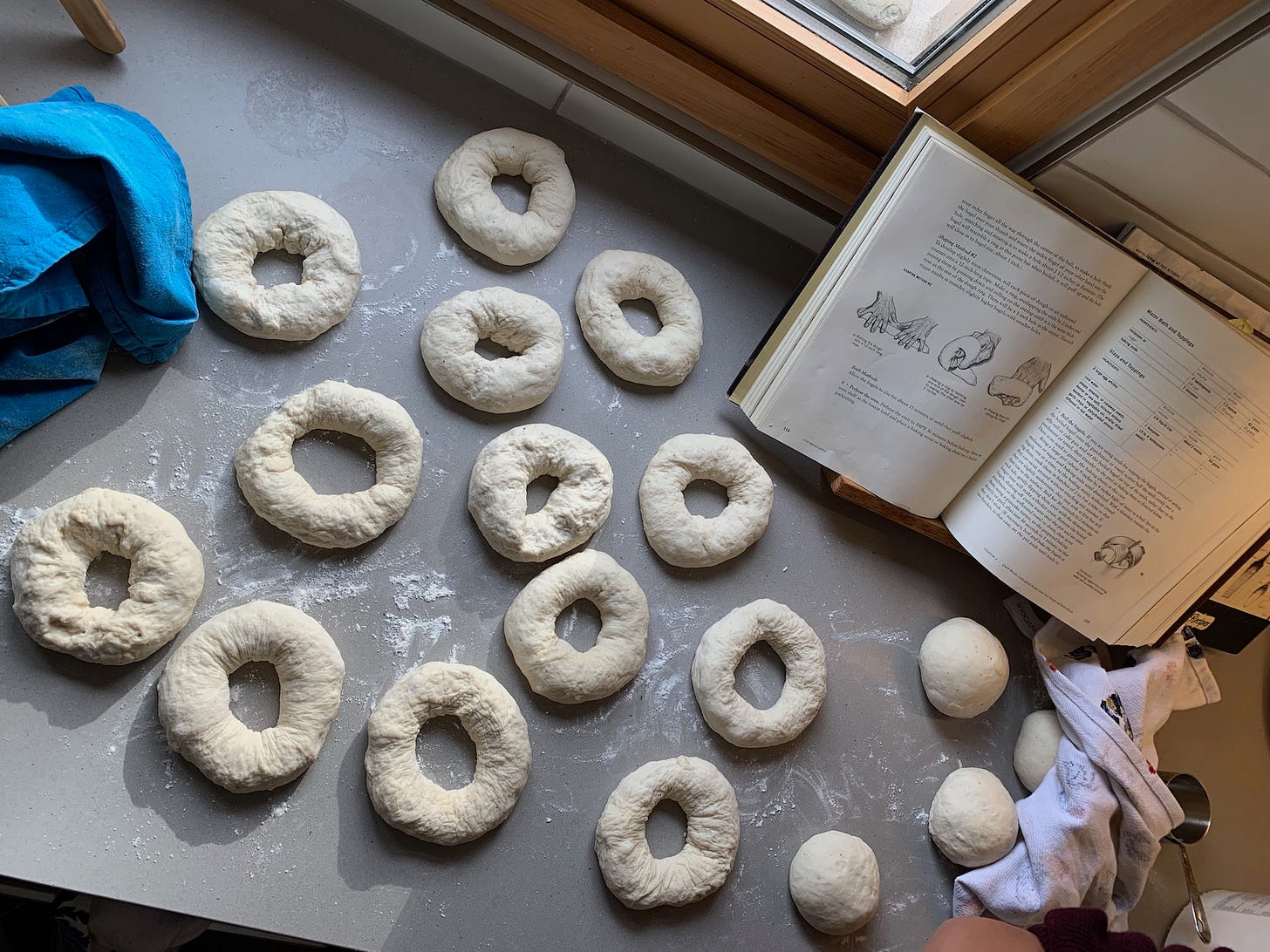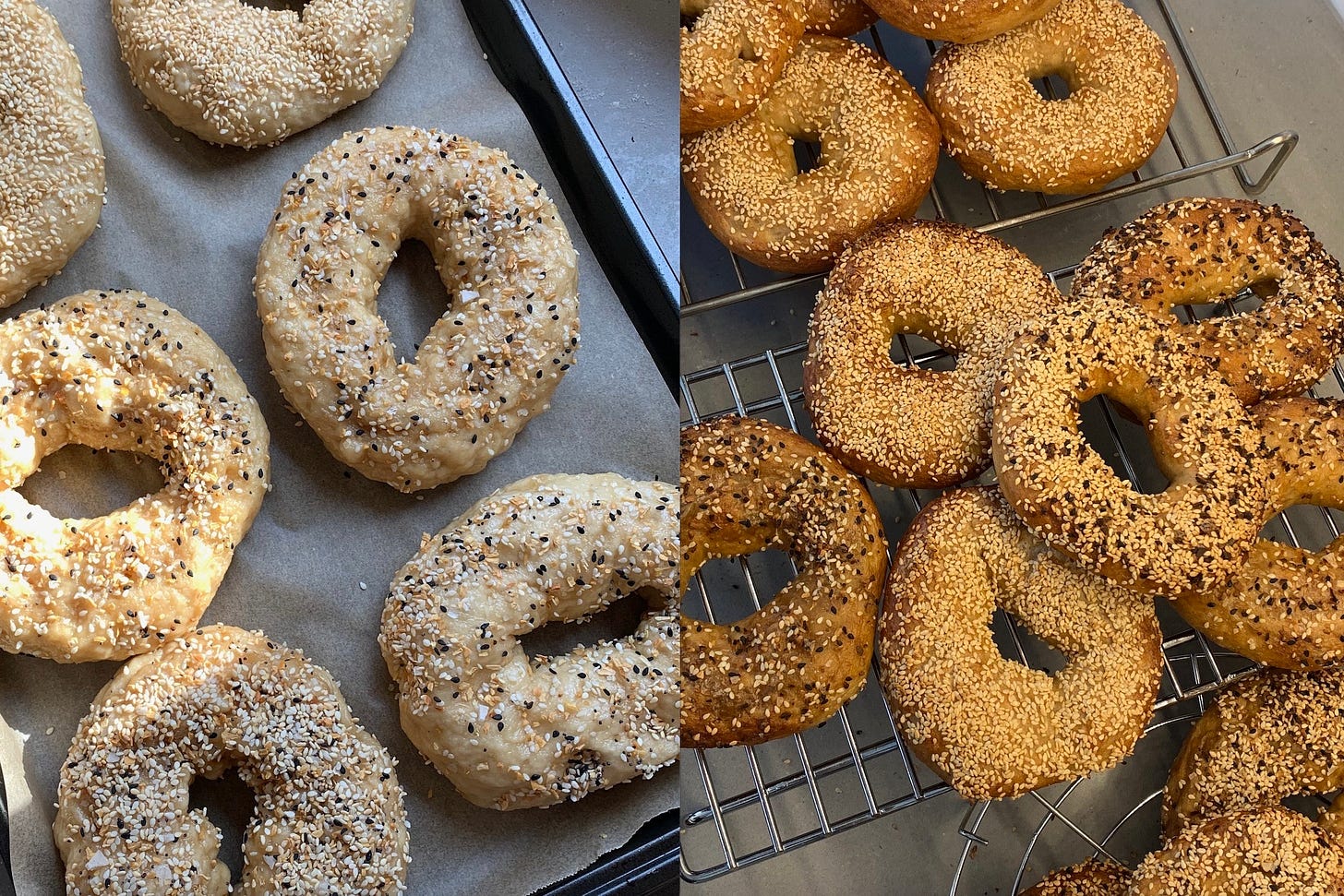Family Day Bagels
A fun cooking project is one of the best ways to spend time with friends and family.
This past Monday was Family Day in Canada. It's a relatively new holiday, first observed in 2008, but it has the pleasant distinction of being the one that breaks up the long and monotonous winter. It gives many of us Canadians something to look forward to during that interminable stretch of time between New Year's and Easter.
I celebrated Family Day by making bagels. My kids had been asking for them recently, so I decided to make a double batch. I prepared the starter in the morning (a layer of wet "sponge" with an insulating flour layer on top), let it ferment while we went to a public skate at the arena, and then mixed it, kneaded it, and set it to rise for the afternoon.
Around 3 p.m., the dough was ready to go. I texted some friends who'd asked to be part of the bagel-making process. We spent the next hour or so cutting, weighing, and shaping dough balls. And then I showed them how to turn it into a bagel.
According to Rose Levy Berenbaum's Bread Bible, there are a couple ways to shape bagels. I prefer sticking my thumb through the middle of a dough ball and then shaping the bagel around it. But at my family's pizza shop, where they make 1,000 bagels every morning that sell out before noon, my mom rolls and twists them into shape, sealing the ends to make a circle.
The bagels are then boiled in water with molasses and baking soda. Boiling is crucial to give that chewy consistency that bagels are famous for, that differentiate them from any other yeast bread. From what I understand, the molasses adds subtle sweetness that's desirable in Montreal-style bagels, and the baking soda makes the water alkaline, which increased the pH value on the outside and results in faster browning.
Then they're glazed, dipped in seeds, and baked in a hot oven until the whole kitchen fills with a glorious aroma. We distracted ourselves playing a few rounds of SushiGo until the bagels were ready to be slathered in butter or cream cheese, enjoyed alongside a pot of Earl Grey tea.
Boiled bagels on the left, baked bagels on the right.
Food Builds Community
Something I've realized is that making good food is a social event in itself. People are drawn to it; they want to be around it—to watch and learn and eat, of course—and I think it’s partly because relatively few people make certain things from scratch. I've hosted "parties" that centre around many kinds of specific food, from bagels, doughnuts, crepes, and cookies, to soup, chili, pizza, and more. This is different from hosting a themed dinner party. These parties often take place at different hours, like the middle of the afternoon or in the morning, on days when there’s not much else going on.
I've noticed that everyone is always happy when good food is in the works. It's an instant mood-booster, particularly in a slower, darker season like mid-February in southwestern Ontario, when the sun rarely shines.
The next time you're feeling down, or if you want a reason to get together with friends, just host a making-food party. Make something special and invite others over to enjoy it. Not only will you create a lovely memory, but you'll have something delicious to munch on for days after.






I'd love to see you do a podcast on one of your baking extravaganzas. So what are the differences in taste and texture between a boiled and baked bagel?